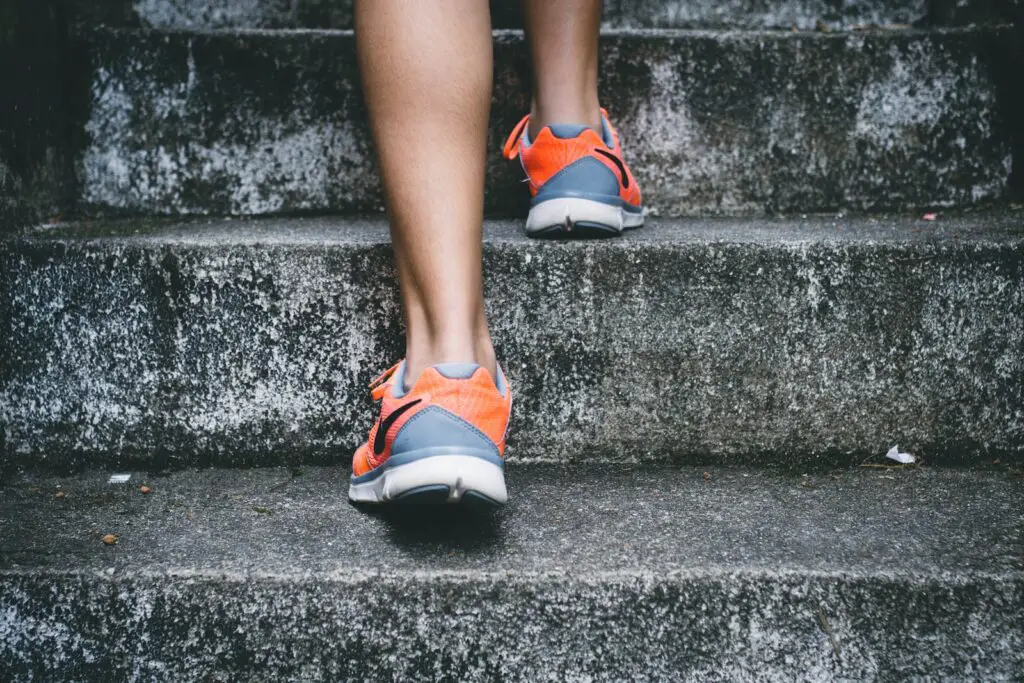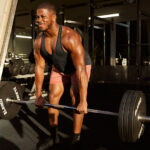Introduction
Starting a fitness journey can be exciting and challenging, especially if you’re new to the gym. But don’t worry; you can achieve your fitness goals with guidance and a well-structured workout plan. This article will walk you through a comprehensive beginner workout plan for women and a gym Workout Plan for beginner females.
Benefits of Regular Exercise
Regular exercise offers numerous benefits, including improved cardiovascular health, increased energy levels, stress reduction, and enhanced mood. It can also help women manage weight and reduce the risk of osteoporosis.
Exercise is an essential component of a healthy lifestyle. Not only does it help you look and feel better. Exercise plays a crucial role in preventing chronic diseases, such as heart disease, diabetes, and certain types of cancer. Regular physical activity can also boost your immune system, making you less susceptible to illnesses.
Setting Fitness Goals

Before hitting the gym, it’s essential to set clear fitness goals. To achieve better fitness, define specific goals to stay motivated and track progress. Setting achievable and realistic goals is vital. Start by defining what you want to accomplish and when you want to achieve it. For example, you plan to lose 10 pounds in three months or run a 5K in eight weeks. These objectives will give you a clear sense of purpose when working out.
Choosing the Right Gym Workout
Selecting the right gym is crucial. Look for a facility that’s convenient, clean, and well-equipped. Many gyms offer female-friendly environments with supportive staff and trainers.
Consider location, operating hours, and available equipment when choosing a gym. Visit the gym and take a tour to ensure it meets your requirements. Some gyms also offer trial memberships, allowing you to test the facilities and services before committing.
Warm-Up and Stretching

Always begin your workout with a proper warm-up to prepare your muscles and reduce the risk of injury. Follow it up with stretching exercises to improve flexibility. Warm-up exercises can include light jogging, jumping jacks, or dynamic stretches. Spend 5-10 minutes warming up to increase your heart rate gradually and loosen your muscles.
After the warm-up, perform static stretches targeting major muscle groups like your legs, arms, and back. Hold each space for 15-30 seconds to improve flexibility and prevent muscle strains.
Cardiovascular Workouts
Cardio exercises like brisk walking, jogging, cycling, or using the elliptical machine are great for burning calories and improving cardiovascular health. Aim for at least 150 minutes of moderate-intensity cardio per week.
Cardiovascular workouts are effective for weight management and improving your endurance. They also enhance your heart and lung function, improving overall health. Consider activities you enjoy, as it will increase your likelihood of sticking to your workout routine.
Strength Training Basics

Strength training is essential for building lean muscle mass and boosting digestion. Start with bodyweight exercises like squats, lunges, and push-ups, gradually progressing to weights.
Strength training helps you achieve a toned appearance and supports functional fitness. Strong muscles are essential for everyday activities like lifting groceries or carrying your kids. Include strength training in your routine 2-3 times a week, targeting different muscle groups on different days.
Core Exercises
A strong core is the foundation of a fit body. Incorporate planks, Russian twists, and leg raises to target your core muscles.
Core exercises help you achieve a toned midsection and contribute to better posture and balance. A strong core reduces the risk of lower back pain and enhances your athletic performance in other activities.
Upper Body Workouts

For well-defined arms and shoulders, include exercises like bicep curls, tricep dips, and shoulder presses in your routine. Upper-body workouts improve your upper body strength, making daily tasks like lifting objects and carrying bags easier. They also contribute to a balanced physique, enhancing your overall appearance. Here is some upper body workout with the procedure.
1. Biceps Curl: Biceps curl is a cool exercise that helps strengthen your arm muscles, called biceps, and bulge. Imagine showing off your “muscles” to your friends! Here’s how to do it:
- Stand up straight with a dumbbell in each hand. Dumbbells are like small weights that you hold.
- Keep your arms straight by your sides. Your palms should face forward like you’re showing your muscles.
- Now, bend your elbows while keeping your upper arms still. Slowly lift the dumbbells towards your shoulders.
- Don’t swing your body or use your back; use your arm muscles to lift the weights.
- Hold for a second at the top and then slowly lower the weights.
- Do about 1015 of these curls for a start. As you get stronger, you can do more.
Biceps curls make your arms look awesome and help you pick up heavy things easily. Just remember to start with a weight that’s not too heavy so you don’t strain your little muscles.
2. Bench Pressing: Bench pressing is like a superhero move for your upper body! It makes your chest, shoulders, and arms super strong. This is the step-by-step process:
- Lie down on your back on a bench or a stable surface.
- Grab a barbell with both hands; your hands should be wider than your shoulders.
- Lower the barbell slowly to your chest, then push it back up. It’s like lifting a heavy shield!
- Ask an adult to spot you, especially if you’re using heavy weights, so they can help if needed.
- Start with a weight you can handle easily and do 810 reps. As you get stronger, you can add more weight.
Bench pressing is fantastic for building strong chest and arm muscles. And it’s fun to see your progress as you lift more and more weight.
3. Overhead Pressing: The overhead press is another superhero move that works your shoulders and arms. It’s like pushing something heavy up into the sky. Here’s how to do it:
- Stand up straight with a dumbbell in each hand.
- Hold the dumbbells at shoulder height, your palms facing forward.
- Push the dumbbells over your head until your arms are straight but not locked.
- Slowly lower the weights back to your shoulders.
- Start with a weight you can manage and do 810 reps. As you get stronger, add more weight.
Overhead pressing helps you become super strong and is excellent for your shoulders and arms. Just remember to use the proper form and ask for help from an adult if needed.
These upper body exercises are like secret weapons to strengthen and healthy your arms. Always use proper form, start with lighter weights, and have an adult help you stay safe and strong!
Lower Body Workouts

Work on your lower body with squats, deadlifts, and leg press exercises. These will help you build strong, shapely legs. Lower body workouts are essential for developing lower body strength and stability. Strong legs are beneficial for climbing stairs, walking, and participating in sports.
1. Squats: Squats are a fantastic lower-body exercise that works your thighs, hamstrings, and glutes. They’re like sitting down and standing up. To do a squat:
- Stand with your feet about hip-width apart.
- Lower your body like you’re sitting in a chair.
- Keep your back straight and your knees over your toes.
- Stand back up to the starting position. You can use your body weight or hold dumbbells for extra resistance.
2. Deadlifts: Deadlifts are great for your lower back, hamstrings, and glutes. They involve picking up weights from the ground. Here’s how to do them:
- Stand with your feet hip-width apart and a barbell in front of you.
- Bend at your hips and knees to pick up the barbell.
- Keep your back straight and stand up, lifting the barbell with you.
3. Lunges: Lunges help make your legs strong and work on your balance. To make a lunge:
- Stand up straight with your hands on your hips.
- Take a big step forward with one foot and lower your body until both knees are bent at about 90 degrees.
- Push back up to the starting position.
- Switch legs and repeat.
4. Leg Press: Leg presses are machine-based exercises that target your quadriceps, hamstrings, and glutes. You sit down and push your weight with your legs.
5. Leg Raises: This exercise is terrific for your lower abdominal muscles. To do leg raises: Lie down on your back with your hands under your hips.
- Lift your legs off the ground and lower them back down without letting them touch the floor.
These lower-body workouts are essential for building strong legs and maintaining a balanced physique. Remember to start with lighter weights and proper form to avoid injuries like upper body exercises. Always have an adult help or supervise you when using weights and exercise equipment.
Proper Form and Technique
Maintaining proper form is crucial to prevent injuries and get the most out of your workouts. Don’t hesitate to seek guidance from a trainer.
Pay attention to your body positioning during exercises. For example, when performing squats, ensure your knees align with your toes and your back remains straight. Proper form maximizes the effectiveness of the exercise while minimizing the risk of strain or injury.
Creating a Weekly Workout Routine
Plan your workouts in advance. Aim for a mix of cardio and strength training exercises, alternating muscle groups to allow for recovery.
Creating a workout schedule ensures that you allocate time for exercise in your daily or weekly routine. Consistency is key to seeing results, so make exercise a non-negotiable part of your schedule.
Here’s an example of a weekly workout schedule for beginners:
- Monday: Cardio (30 minutes)
- Tuesday: Upper Body Strength Training
- Wednesday: Cardio (30 minutes)
- Thursday: Lower Body Strength Training
- Friday: Cardio (30 minutes)
- Saturday: Rest or Light Activity (e.g., yoga or walking)
- Sunday: Rest
*** Everyone’s schedule and fitness goals differ, so customize your plan accordingly.
Tracking Progress
Keep a workout journal to monitor your progress. Note down your exercises, weights, and repetitions. Celebrate your achievements along the way.
Tracking your progress provides motivation and helps you identify areas for improvement. Looking back and seeing progress is satisfying, whether lifting weights, running longer distances, or losing inches.
Eating Balance Diet

A balanced diet is essential to support your fitness goals. Fuel your body with lean proteins, whole grains, fruits, and vegetables. Stay hydrated throughout the day.
Proper nutrition complements your exercise routine by providing the necessary nutrients for muscle repair and recovery. Consider consulting with a registered dietitian for personalized nutrition guidance.
Before a workout, have a light meal or snack that includes carbohydrates for energy and protein for muscle support. After your workout, consume protein and carbohydrates to aid recovery.
Rest and Recovery
Rest is just as important as exercise. Ensure you get enough sleep, and incorporate rest days into your schedule to allow your muscles to recover.
Rest is when your body repairs and grows stronger. Overtraining can lead to burnout and an increased risk of injuries, so prioritize rest and listen to your body’s signals. Aim for 7-9 hours of quality sleep each night, including 1-2 weekly rest days.
Conclusion
Embarking on a gym workout plan as a female beginner is a positive step towards a healthier, more active lifestyle. Stick to your goals, stay consistent, and remember that progress takes time. You’ve got this!
FAQs (Frequently Asked Questions)
- How many days a week should I work out as a beginner?
- Aim for at least 3-4 days of exercise per week, with rest days in between.
- Can I build muscle without lifting heavy weights?
- Yes, you can start with bodyweight exercises and gradually increase the resistance.
- What should I eat before and after a workout?
- Have a balanced meal 1-2 hours before exercising and a combination of protein and carbs post-workout.
- How long before I see results from my gym workouts?
- Results vary, but with consistency, you may start seeing changes in 4-6 weeks.
- Is it essential to hire a personal trainer as a beginner?
- While not crucial, a trainer can provide valuable guidance and ensure proper form.




